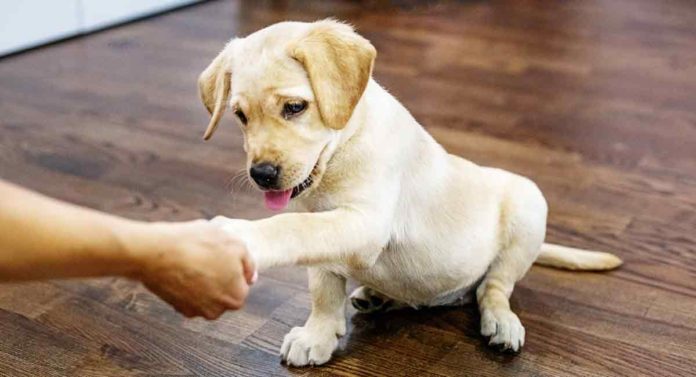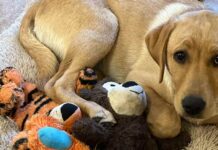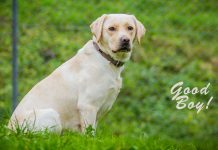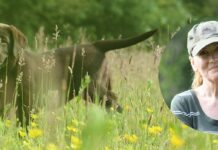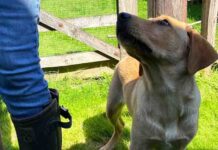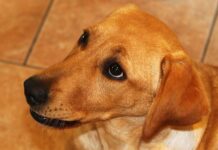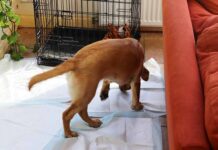The best age to start Labrador puppy training depends on when you bring them home, and what their purpose is. But if you use positive reinforcement methods only, you can begin with some light obedience work almost straight away.
Labrador puppy training inevitably begins informally the day you bring them home too. Your dog will be learning from you constantly, even when you don’t want them too! Some behaviors will be encouraged by attention, pets and food. Other actions will be discouraged by scary novel sounds, or the prevention of access to things that they like.
Today I’ll share my personal experience and the latest behavioral research, to help you map out your training journey.
- How your Labrador puppy learns.
- Puppy training methodologies.
- Basic puppy training concepts.
- What is the best age to start training a Lab puppy to work?
Labs gained their well-deserved place among favorite breeds for so many reasons. Enthusiastic companions, fast learners, loyal and brave, Labrador Retrievers are fantastic pets.
Now, if you’ve acquired a Lab pup with the hope of working together in the field, duck stand, service animal industry or emergency response, you’re probably eager to get started with training right away. You’ve come to the right place. I’ve spent the better portion of my dog training career specializing in training Lab puppies.
How Puppies Learn
In the natural canine world, mother dogs teach their pups everything they need to know about their world, survival and living together happily in various stages of development. Now it’s up to you to do it. Most professional trainers try to mimic the natural canine learning process in their puppy training phases.
Use Positive Puppy Training Methods
Puppy training should be positive for both of you. In fact, we only recommend positive training techniques.
In the past, it was traditional for trainers to use punishment or dominance to establish a “respect hierarchy for the pack.” But recent research is in favor of a style of training called positive reinforcement. Positive reinforcement is simply when you reward your dog for doing something you like and ignore the behaviors you consider “bad” or unwanted. Rewards can include food, special treats, praise and petting, playing with a favorite toy, etc.
Today, we’ll be walking you through the basics of positive reinforcement training with your puppy.
Basic Training Concepts Every Puppy Should Learn
The first two components of your puppy training should be thorough socialization and potty training. Here are a few tips with each of those early behaviors.
Dog Socialization
Socialization doesn’t just mean taking your puppy on play dates with other pups. Socialization actually refers to exposure to a wide range of situations and individuals. This goes for being around lots of different people, including children. While your pup is still impressionable and inquisitive, introduce her to friends, neighbors and strangers. Introduce her to children with careful instructions to stay quiet, move slowly and pet gently.
(Children have a natural inability to grip until they are 7 years old, so don’t allow small children to hold your puppy. They could end up grabbing her tightly, and scaring or hurting her). Being handled by other people will be very key in socializing your puppy.
Your dog should be properly socialized to gentle and careful handling, teeth brushing, touching ears and paws and tail. This will make trips to the vet and groomer easier. Plus, since these dogs are so small even as adults, it’s likely they will be carried around and passed from person to person. It’s very important your pup doesn’t have fear of being handled, or she could end up biting someone’s face. Make sure to also check out our guide to taking puppies outside for more help with socialization.
Crate Training for Dogs
Crate training is the process of teaching your dog to love spending time secure in their cosy den. Some puppies basically crate train themselves, loving their crate from day one. Others need a more gradual introduction to this safe space. The trick is to not turn crating into a punishment, but instead make it a wonderful place to have a short undisturbed rest.
Training Your Lab to Have Good Manners
Once you’ve established a solid foundation for home life, you can move on to other basic canine companion manners. It’s important to teach your pup not to jump on people. Most puppies will go through a play biting phase, so if you need help training your lab not to nip, you can follow this guide.
Other Training Essentials
After you’ve dealt with the priorities of puppy training, you can move on to some other training essentials. The most-used training tools for any breed of dog include “sit” and “stay.” These will be especially important for a lab that is meant to hunt. A dog that learns to “stay” learns self-control, which will be important to temper the high energy of the lab.
It will be important for your dog to sit quietly in the field or duck stand. Self-control should be incorporated throughout daily routines and all training phases. Finally, learning how to walk politely on a leash in public is important.
What is the Best Age to Start Training a Lab Puppy to Hunt?
If you’re thinking of training your lab puppy to hunt with you, you can get started right away with basic training concepts catered toward hunting requirements. In addition to the behaviors listed above, there are a few extra considerations for training a gundog. As early as 8 weeks old, professional gundog trainers begin introducing lab puppies to various scenarios. The core behavioral requirements for a gundog that can be started in puppies this young are:
- Thorough socialization and desensitization to various environments and sounds. Be sure to start with quieter sounds and build to louder sounds, especially when introducing the sound of gunfire, to avoid creating a frantic dog.
- If you plan on hunting from a boat, be sure to introduce your pup early to climbing around the boat (even if it’s in your garage) and hearing the sounds of the boat’s engine.
- Calmness and steadiness amidst distraction. The earliest introduction to this is teaching your pup to sit for his meals, which can be captured as early as six weeks.
- Heeling.
There are, however, two important considerations to your Lab puppy training. First, don’t work your pup on long-distance running before six months. Before their leg bones are fully developed, Labs can develop joint issues if they run too hard and long. Second, resist the urge to play fetch and retrieve every day with your Lab puppy.
Some Lab puppy owners get concerned if a young puppy doesn’t retrieve right away. They overdo it with tossing a ball or dummy to try to encourage the pup to retrieve. The retrieving instinct typically kicks in quite strong around puberty (between five to 10 months). Instead, we suggest focusing on sit, stay and waiting quietly with self control. Those are the more difficult behaviors for a lab to learn once adolescent hormones kick in.
What is the Best Age to Start Training a Lab Puppy?
Whether your Lab puppy will be a family companion or a working dog, it’s a good idea to get started with his or her training as soon as you get him or her. Start with socialization and household manners as early as 8 weeks old. Then move to sit, stay, steadiness training, and walking on a leash between 12 and 18 weeks.
The level of difficulty in your lab’s training will simply grow throughout their lives. Training is an ongoing life skill, rather than something you do once and consider done. For a hunting Lab, adding various distractions and practicing perfect recall in different environments will be the two biggest training techniques to work on throughout life. Enjoy your training!
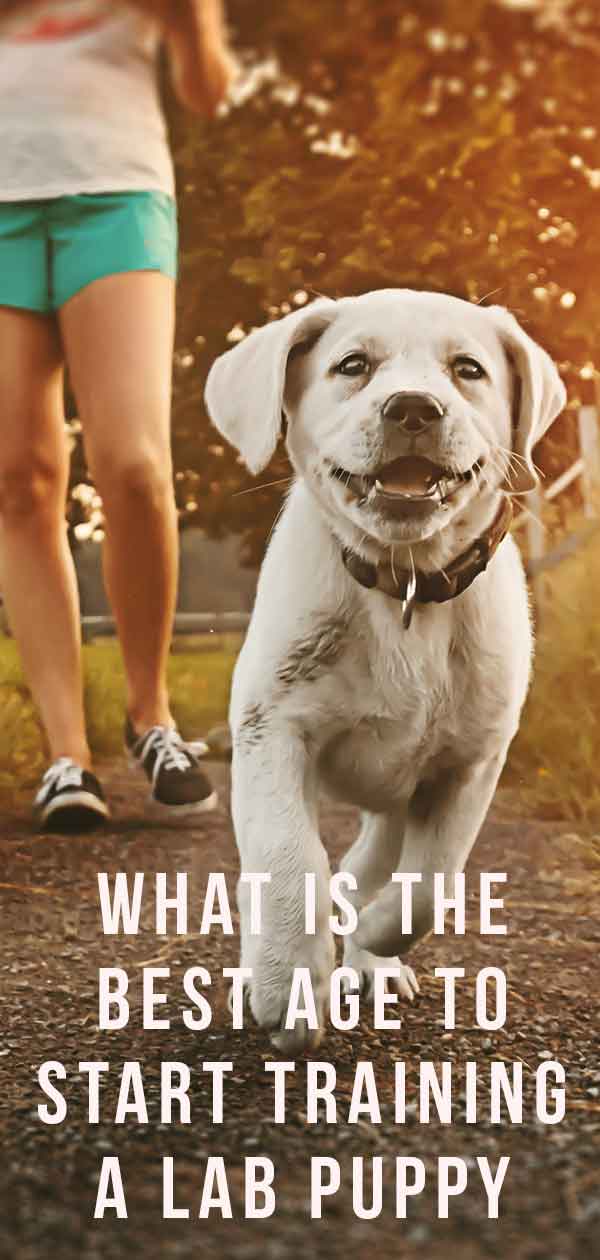
The Labrador Site Founder
Pippa Mattinson is the best selling author of The Happy Puppy Handbook, the Labrador Handbook, Choosing The Perfect Puppy, and Total Recall.
She is also the founder of the Gundog Trust and the Dogsnet Online Training Program
Pippa's online training courses were launched in 2019 and you can find the latest course dates on the Dogsnet website

